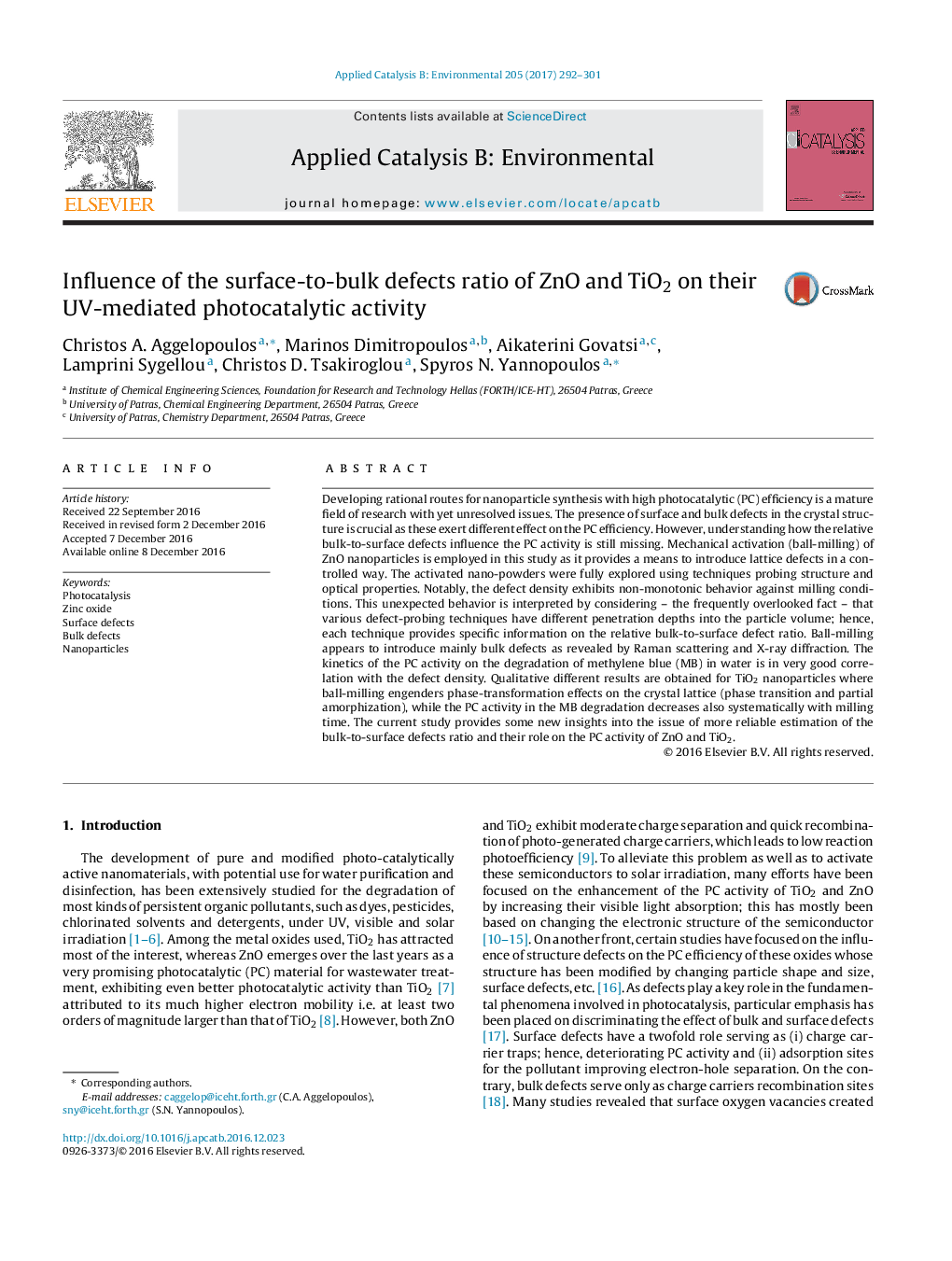| کد مقاله | کد نشریه | سال انتشار | مقاله انگلیسی | نسخه تمام متن |
|---|---|---|---|---|
| 6454329 | 1418815 | 2017 | 10 صفحه PDF | دانلود رایگان |

- Defect engineering of ZnO and TiO2 nanocrystals is achieved by controlled mechanical activation.
- Lattice defects and phase transformations take place in ZnO and TiO2, respectively.
- Defects-probing techniques explore bulk or surface defects depending on their penetration depth.
- The PC efficiency of ZnO and TiO2 decreases with increasing the bulk-to-surface defect ratio.
Developing rational routes for nanoparticle synthesis with high photocatalytic (PC) efficiency is a mature field of research with yet unresolved issues. The presence of surface and bulk defects in the crystal structure is crucial as these exert different effect on the PC efficiency. However, understanding how the relative bulk-to-surface defects influence the PC activity is still missing. Mechanical activation (ball-milling) of ZnO nanoparticles is employed in this study as it provides a means to introduce lattice defects in a controlled way. The activated nano-powders were fully explored using techniques probing structure and optical properties. Notably, the defect density exhibits non-monotonic behavior against milling conditions. This unexpected behavior is interpreted by considering - the frequently overlooked fact - that various defect-probing techniques have different penetration depths into the particle volume; hence, each technique provides specific information on the relative bulk-to-surface defect ratio. Ball-milling appears to introduce mainly bulk defects as revealed by Raman scattering and X-ray diffraction. The kinetics of the PC activity on the degradation of methylene blue (MB) in water is in very good correlation with the defect density. Qualitative different results are obtained for TiO2 nanoparticles where ball-milling engenders phase-transformation effects on the crystal lattice (phase transition and partial amorphization), while the PC activity in the MB degradation decreases also systematically with milling time. The current study provides some new insights into the issue of more reliable estimation of the bulk-to-surface defects ratio and their role on the PC activity of ZnO and TiO2.
185
Journal: Applied Catalysis B: Environmental - Volume 205, 15 May 2017, Pages 292-301